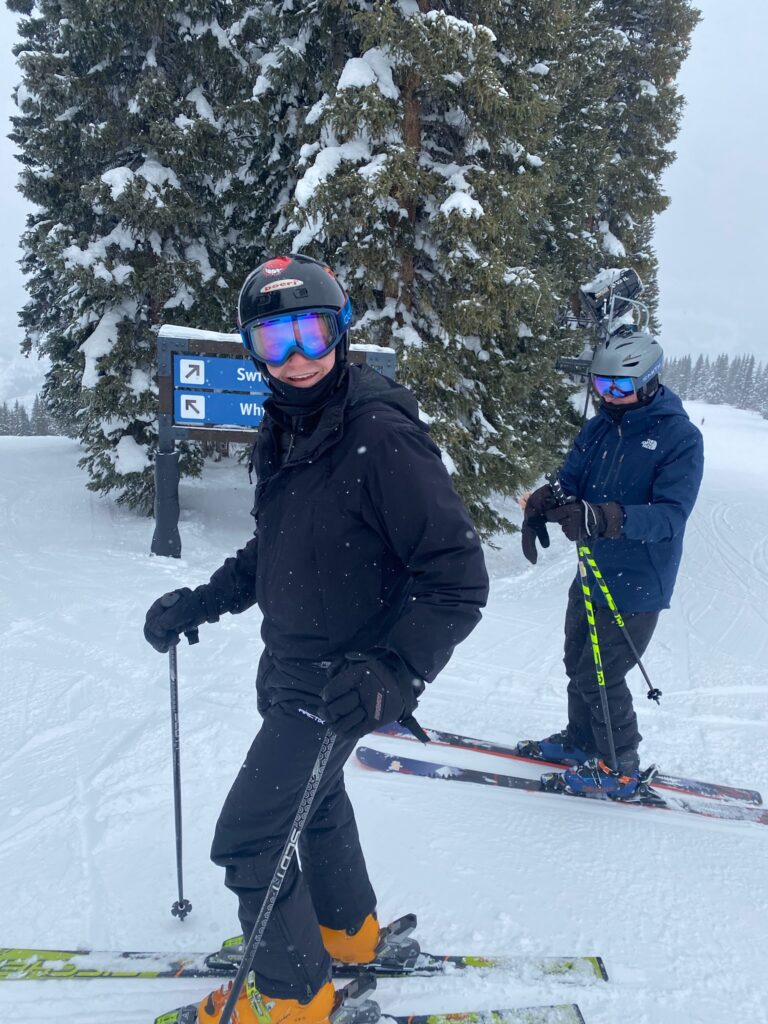About Davidson
Davidson is a private liberal arts college in North Carolina. With just under 2,000 undergraduates and no graduate students, Davidson offers a tight academic community with small class sizes. Despite the small enrollment size, Davidson boasts over 200 student-led organizations, including four political clubs. The college has a history of political consciousness and engagement, as well. The Phi and Eu hall debates, a tradition that started in the 1800s, allow students to debate each other across the quad in years of a presidential election. Prior to the 2020 general election, Davidson hosted CNN for an event about undecided voters in the area, including Davidson students.
Mission
Over the last three election cycles, the North Carolina House of Representatives District 98 seat has been decided by an average of 1,109 votes, a figure which highlights the importance of Davidson College’s voter engagement. According to exit polling data from 2014 to 2020, Davidson students have not only increased registration, voting, and yield rates, but they have also hit the polls at rates consistently higher than comparable cohorts. Relying on work by scholars at Tufts University, we investigate why Davidson students repeatedly vote above national averages, and we identify resources that other college campuses could implement to emulate Davidson’s participation. Furthermore, we offer suggestions for ways in which Davidson’s administration and student organizations can help maintain high levels of student civic engagement in future elections.
Using exit-polling data from past elections, our project investigates Davidson’s student voter turnout and situates local data within the larger, national trends in youth civic engagement. From there, we examine potential improvements for the college and its student organizations to help maintain engagement and political participation in future elections. We use site interaction to help pinpoint and root out our community’s misperceptions about voting and its impact. The project features the following sections:
To learn more about our creative process, please read our White Paper.
The Creators
Gray
My name is Gray (he/him, like the color) – I’m a senior at Davidson College pursuing a Political Science major and Digital Studies minor. Born and raised in Washington, DC, politics, policy, and elections have never been distant. At Davidson, I’ve developed relevant skills in political research and communications through various roles, including as a research assistant for a Political Science professor, data collector for the College Crisis Initiative, and as a Politics Editor for The Davidsonian. I’m excited to work at the intersection of civic engagement issues and effective communications with this project, and I hope that it will help change perceptions of voting in our own community.
Lukas
My name is Lukas – I’m finishing up a double major at Davidson College of English and Philosophy, which has given me ample experience turning research into a narrative. During a course in creative nonfiction, I learned from the works of prominent nonfiction writers and had the opportunity to hone my own storytelling abilities. I’m looking forward to applying those skills to our research on young voter turnout.
Works Cited
“2020 Election Center.” Center for Information and Research on Civic Learning and Engagement (CIRCLE) at Tufts University, https://circle.tufts.edu/2020-election-center. Accessed 23 Apr. 2023.
“2020 Presidential Election Voting and Registration Tables Now Available.” US Census Bureau, 29 Apr. 2021, https://www.census.gov/newsroom/press-releases/2021/2020-presidential-election-voting-and-registration-tables-now-available.html.
Barber, Michael, and John B. Holbein. “400 Million Voting Records Show Profound Racial and Geographic Disparities in Voter Turnout in the United States.” PLOS ONE, edited by Noam Lupu, vol. 17, no. 6, June 2022, p. e0268134. DOI.org (Crossref), https://doi.org/10.1371/journal.pone.0268134.
Bhatti, Yosef, and Kasper M. Hansen. “Leaving the Nest and the Social Act of Voting: Turnout among First-Time Voters.” Journal of Elections, Public Opinion & Parties, vol. 22, no. 4, Nov. 2012, pp. 380–406. DOI.org (Crossref), https://doi.org/10.1080/17457289.2012.721375.
Clayton, Caleb, and Hailey Trimpey. “Young Voter Turnout in the Midterm Elections.” ONU Institute for Civics and Public Policy, vol. Critical Question 20, Nov. 2022, https://digitalcommons.onu.edu/cgi/viewcontent.cgi?article=1018&context=critical_questions.
Coppock, Alexander, and Donald P. Green. “Is Voting Habit Forming? New Evidence from Experiments and Regression Discontinuities: IS VOTING HABIT FORMING?” American Journal of Political Science, vol. 60, no. 4, Oct. 2016, pp. 1044–62. DOI.org (Crossref), https://doi.org/10.1111/ajps.12210.
Desilver, Drew. “Turnout in 2022 House Midterms Declined from 2018 High, Final Official Returns Show.” Pew Research Center, https://www.pewresearch.org/fact-tank/2023/03/10/turnout-in-2022-house-midterms-declined-from-2018-high-final-official-returns-show/. Accessed 27 Mar. 2023.
“Election Demographics and Voter Turnout: Breaking down Demographic Data, the Diversifying U.S. Population, and What It Means for the 2022 Elections and Beyond.” Bloomberg Government, 13 July 2022, https://about.bgov.com/brief/election-demographics-and-voter-turnout/.
Fraga, Bernard, and John Holbein. “Measuring Youth and College Student Voter Turnout.” Election Studies, vol. 65, June 2020, https://doi.org/10.1016/j.electstud.2019.102086.
Frey, William H. “Midterm Exit Polls Show That Young Voters Drove Democratic Resistance to the ‘Red Wave.’” Brookings, 18 Nov. 2022, https://www.brookings.edu/research/midterm-exit-polls-show-that-young-voters-drove-democratic-resistance-to-the-red-wave/.
Grumbach, Jacob M., and Charlotte Hill. “Rock the Registration: Same Day Registration Increases Turnout of Young Voters.” The Journal of Politics, vol. 84, no. 1, Jan. 2022, pp. 405–17. DOI.org (Crossref), https://doi.org/10.1086/714776.
Hall, Heather. Voting Behavior Among Young Adults: An Analysis of Youth Voters and How Behavioral Economic Concepts Can Be Applied to Increase Young Voter Turnout. Pforzheimer Honors College, 2019, https://digitalcommons.pace.edu/cgi/viewcontent.cgi?article=1273&context=honorscollege_theses.
“Important Dates in the 2024 Presidential Race.” Ballotpedia, https://ballotpedia.org/Important_dates_in_the_2024_presidential_race. Accessed 2 May 2023.
Khalid, Asma, et al. “On The Sidelines Of Democracy: Exploring Why So Many Americans Don’t Vote.” NPR, 10 Sept. 2018. NPR, https://www.npr.org/2018/09/10/645223716/on-the-sidelines-of-democracy-exploring-why-so-many-americans-dont-vote.
Kornbluh, Mariah, et al. “Exploring Civic Behaviors amongst College Students in a Year of National Unrest.” Journal of Community Psychology, vol. 50, no. 7, Sept. 2022, pp. 2950–72. DOI.org (Crossref), https://doi.org/10.1002/jcop.22808.
“Millions of Youth Cast Ballots, Decide Key 2022 Races.” Center for Information and Research on Civic Learning and Engagement (CIRCLE), 9 Nov. 2022, https://circle.tufts.edu/latest-research/millions-youth-cast-ballots-decide-key-2022-races.
Mo, Cecilia Hyunjung, et al. “Civilian National Service Programs Can Powerfully Increase Youth Voter Turnout.” Proceedings of the National Academy of Sciences, vol. 119, no. 29, July 2022, p. e2122996119. DOI.org (Crossref), https://doi.org/10.1073/pnas.2122996119.
Plutzer, Eric. “Becoming a Habitual Voter: Inertia, Resources, and Growth in Young Adulthood.” American Political Science Review, vol. 96, no. 1, Mar. 2002, pp. 41–56. DOI.org (Crossref), https://doi.org/10.1017/S0003055402004227.
Skelley, Geoffrey, and Kyle Kondik. How Midterms Do (and Do Not) Differ from Presidential Elections – Sabato’s Crystal Ball. 2 Mar. 2017, https://centerforpolitics.org/crystalball/articles/how-midterms-do-and-do-not-differ-from-presidential-elections/.
“The National Study of Learning, Voting, and Engagement (NSLVE).” Institute for Democracy & Higher Education at Tufts University, https://idhe.tufts.edu/nslve. Accessed 27 Mar. 2023.
Zhu, Claire. A Study for Improving Youth Voter Participation. preprint, Politics and International Relations, 21 June 2021. DOI.org (Crossref), https://doi.org/10.33774/apsa-2021-2lpj8.
Images and Videos
“Chambers Building.” Davidson College Website, https://www.davidson.edu/sites/default/files/styles/extra_extra_large_24_7/public/2023-03/ChambersBuilding_2.jpg?h=a4756790&itok=2I4isM5m. Accessed March 13, 2023.
“Eu and Phi Hall Debates.” Davidson College Website, https://www.davidson.edu/sites/default/files/styles/max_2600x2600/public/2022-12/DSC_2550.JPG?itok=4mRmwWZW. Accessed April 07, 2023.
“E.H. Little Library.” Davidson College Website, https://www.davidson.edu/sites/default/files/styles/extra_extra_large_24_7/public/2019-07/E.H.LittleLibrary_017.JPG.jpg?itok=GtSuBUa5. Accessed April 23, 2023.
How Does Voter Turnout in Midterms Compare to Presidential Elections? Directed by Khan Academy, YouTube, 2018, https://youtu.be/Of8A37PGgpE.
Why Does Your Vote Matter? Directed by Khan Academy, YouTube, 2018, https://youtu.be/6Vf_mmb0ED4.


